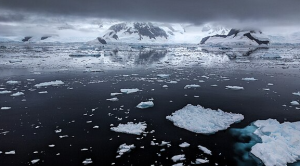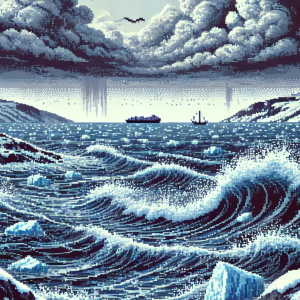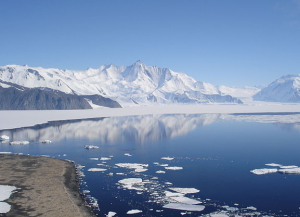
Mars Had Rippled Lakes: Ancient Wave Marks That Challenge Everything We Knew About the Red Planet
A Rippling Martian Lake Under a Warm, Breezy Sky
It sounds like something out of science fiction, but NASA’s Curiosity rover just rewrote our understanding of Mars’ ancient climate. Buried within the dusty rocks of Gale Crater are tiny ripples—symmetrical wave ripples, to be precise—that could only have been carved by the gentle oscillations of liquid water. Yes, water. Free-flowing, ice-free, and very much a part of Mars’ mysterious past.
These ripples aren’t just a curiosity (pun intended). They’re a time capsule, locked away for billions of years, offering clues about a Mars we barely recognize: one warm enough, humid enough, and atmospheric enough to sustain open lakes. Let’s dive into the fascinating story of these ripples and why they’re making planetary scientists rethink everything.
How Do Ripples Solve a Martian Mystery?
For years, scientists have debated whether ancient Mars was a cold, icy tundra with occasional meltwater or a warmer, wetter world teeming with lakes and rivers. While plenty of evidence points to water-carved landscapes—like dried-up riverbeds and canyon systems—the question of how that water existed remains a puzzle. Was it locked beneath layers of ice? Or did Mars enjoy brief, idyllic periods of open water?
Enter the symmetrical ripples. Found in two separate locations within Gale Crater’s Mirador formation, these sedimentary features are game-changers. On Earth, such ripples form when wind generates surface waves that ripple across a shallow lake, creating oscillating currents that mold the lakebed. Here’s the kicker: this process only happens when the water’s surface is ice-free and exposed to the atmosphere.
In other words, these ripples are smoking-gun evidence of an ancient Mars that wasn’t entirely locked in ice.
The Detective Work Behind the Discovery
Imagine you’re part of the Curiosity rover team, poring over images sent back from 200 million miles away. The rover’s cameras zoomed in on the wave ripples, which were preserved in sedimentary layers just 15 centimeters thick. The ripples were shockingly small—about 4.5 centimeters in wavelength—and perfectly symmetrical, a hallmark of wave-generated formations.
But the team didn’t stop there. Using detailed modeling, they simulated Martian wind speeds, atmospheric pressures, and water depths to determine how these ripples could have formed. They concluded that the lakes in Gale Crater were likely shallow, no more than 2 meters deep, and existed during a time when Mars’ atmosphere was dense enough to sustain liquid water.
Here’s the twist: these ripples don’t just represent a fleeting moment in Martian history. They’re part of a larger story of recurring lakes, each forming under similar conditions, preserved in the rock record like pages in a planetary diary.
Why This Changes the Mars Game
Wave ripples might sound like a small detail, but in the world of planetary science, they’re monumental. For decades, theories about Mars’ watery past have leaned on the idea that most surface water was ice-covered. After all, it’s easier to explain lakes under a protective sheet of ice when the planet is cold and its atmosphere is thin.
But symmetrical ripples throw a wrench into that theory. They demand open water—and by extension, a climate warm enough and atmospheric enough to allow such lakes to exist. This challenges previous models that painted Mars as an almost perpetually frozen world during its early history.
Big Questions and Big Implications
The discovery of these ripples raises some tantalizing questions.
- How long did these open lakes last? Were they fleeting, appearing during brief climate spikes, or did they persist for thousands or millions of years?
- What caused such dramatic climate shifts? Could volcanic activity, asteroid impacts, or greenhouse gas bursts have periodically warmed Mars?
- Could these lakes have hosted life? With stable, open water and warmer conditions, the stage was set for potential microbial life to flourish.
The ripples also add a critical piece to the Mars climate puzzle. To fully understand them, scientists will need to tweak existing climate models, incorporating the possibility of warmer, wetter periods during the Hesperian era—about 3.0 to 3.7 billion years ago.
Bringing Mars Back to Life
Here’s the most exciting part: these ancient ripples remind us that Mars wasn’t always the barren, rust-colored desert we see today. It had lakes that sparkled under a thin blue sky, stirred by breezes that carried whispers of a world teeming with potential.
Every discovery like this pushes us closer to answering the ultimate question: Did life ever exist on Mars? While Curiosity wasn’t designed to detect life directly, it’s leaving behind a trail of breadcrumbs—like these ripples—that future missions can follow.
What’s Next for Martian Exploration?
The ripples in Gale Crater are just the beginning. NASA’s Perseverance rover, currently exploring Jezero Crater, is equipped to collect rock samples that might tell us even more about Mars’ watery history. Meanwhile, scientists back on Earth are already dreaming up new missions to dig deeper—literally—into the Red Planet’s past.
Mars is a planet of extremes, but discoveries like this remind us that it’s also a planet of stories, waiting to be uncovered layer by layer.
Let’s Explore Together
What do you think? Could Mars’ ancient lakes have been teeming with microbial life? How does this change your view of the Red Planet’s past?
Share your thoughts in the comments or on social media—let’s keep the curiosity alive. And don’t forget to pass this along to your favorite space enthusiast.
Mars’ story isn’t just about the past—it’s about what’s possible in the future. So, what’s the coolest thing you’ve learned about Mars lately? Let’s geek out together.
Feed Your Curiosity:
In a world of competing narratives, science must remain front and center. This Week in Science brings you the latest research, cutting-edge discoveries, and actionable insights every week. This free newsletter is an essential resource for educators and lifelong learners navigating today’s challenges. Subscribe now to be part of the movement that keeps science accessible and impactful. If you liked this blog, please share it—your referrals are vital for spreading the truth.



